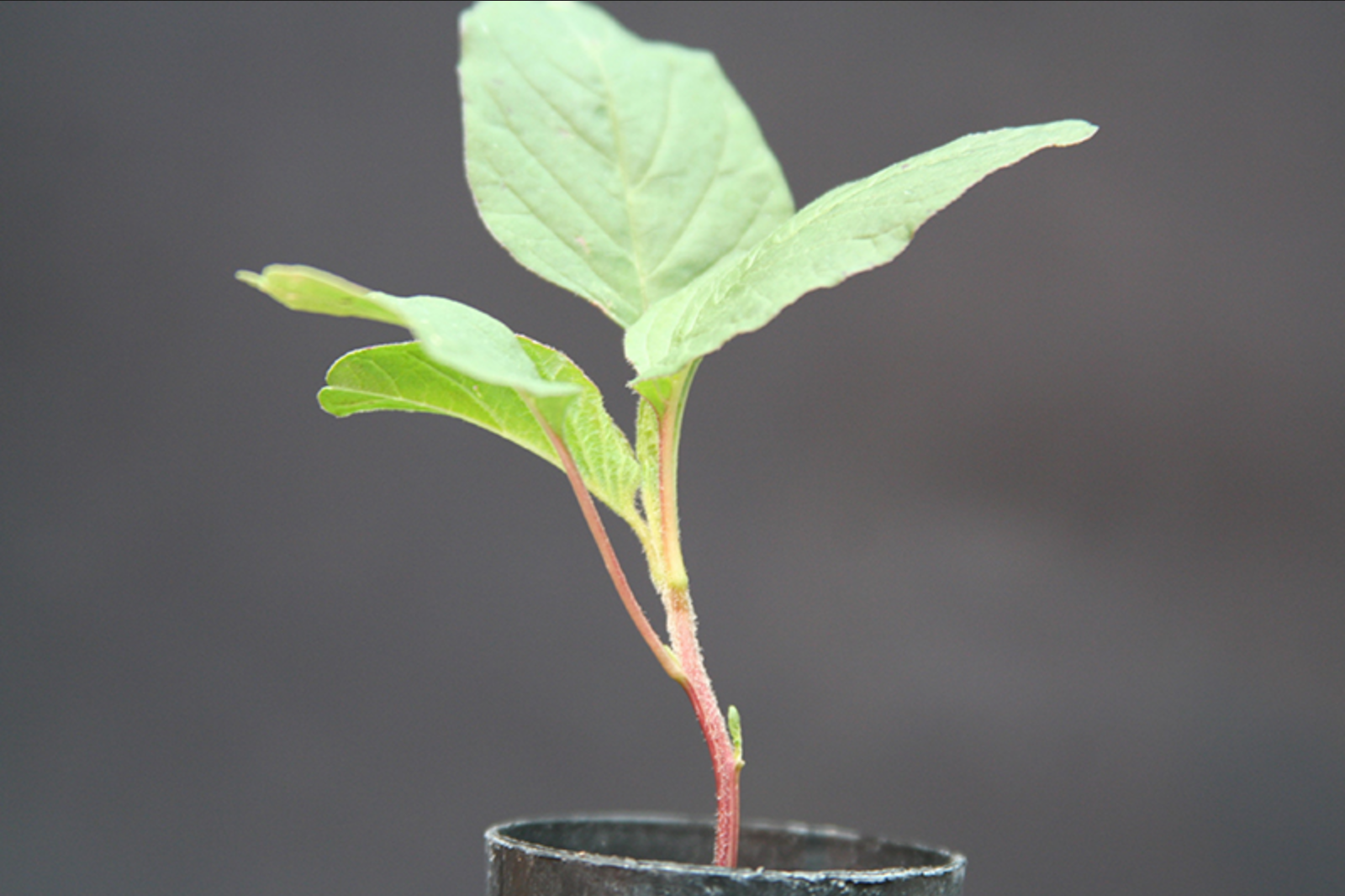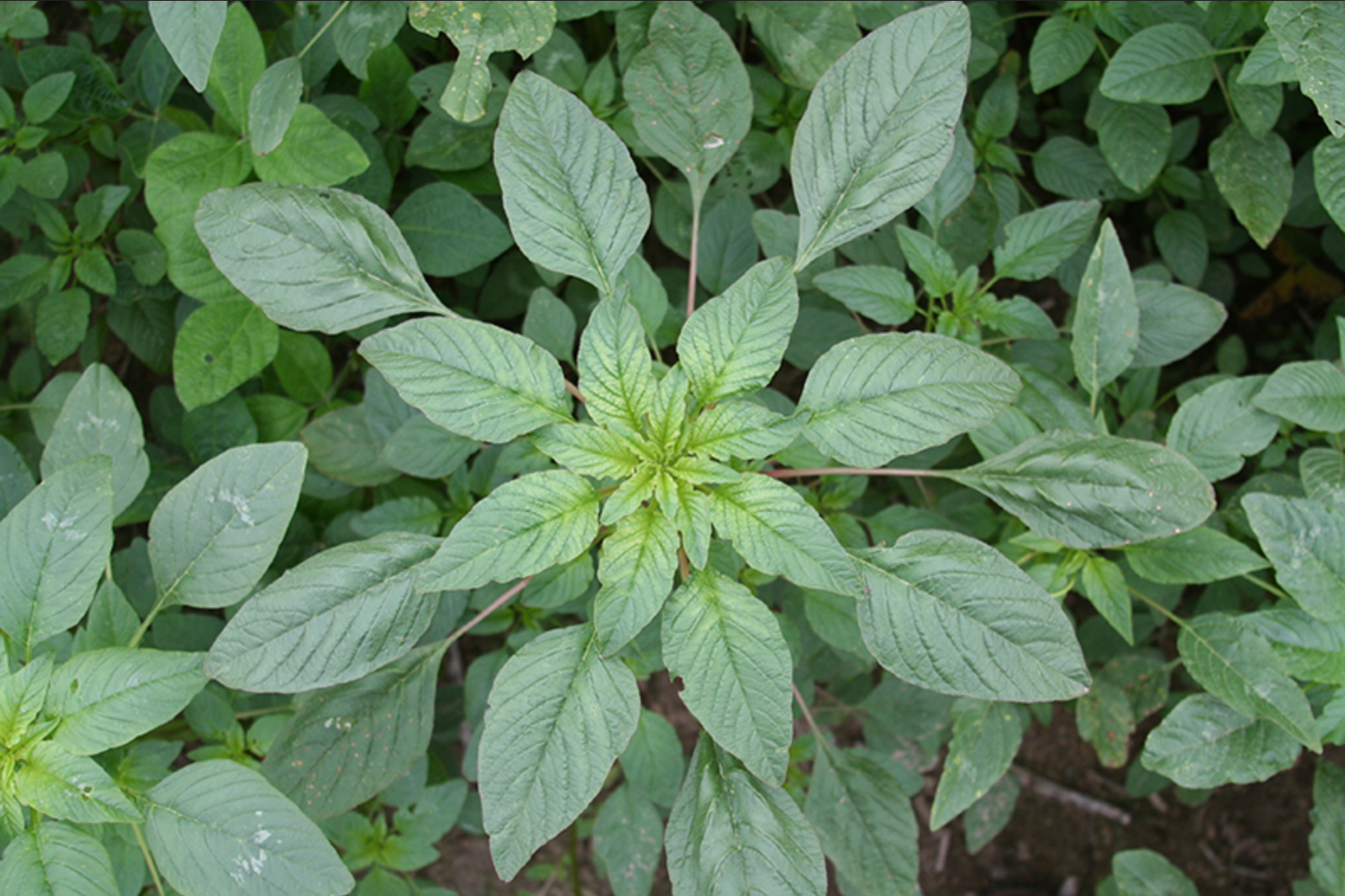Picture of the Week
April 19, 2021
Pigweed Identification
Marcelo Zimmer, Weed Science Program Specialist, Purdue University
The term pigweed is often used to lump together all species within the Amaranthus genera. Within the state of Indiana, the most prevalent and common Amaranth specie is (or at least used to be) smooth or redroot pigweed (Amaranthus retroflexus). However, two new Amaranth species have become increasingly predominant in Indiana over the last decade: Common Waterhemp (Amaranthus rudis) and Palmer amaranth (Amaranthus palmeri).
The identification of these individual species can prove to be essential as waterhemp and Palmer amaranth are much more aggressive and likely to be herbicide-resistant as compared to the redroot pigweed populations that have traditionally existed in Indiana. So when scouting your fields this spring rather than simply glancing at that weed in your field and generalizing it as a "pigweed", take a closer look and determine just exactly what species you have. The following characteristic can help you distinguish the three Amaranth species.
Redroot pigweed: Stems will have hairs present especially towards the growing point of younger plants. Leaves will appear to be rough in texture and are oblong to oval in shape.
Common waterhemp: hairs will be absent on all parts of the plant. Leaves appear to have a waxy upper surface and are much more lance to linear in shape than that of either redroot pigweed or Palmer amaranth. The petiole of a waterhemp plant will be shorter than the leaf blade attached to it.
Palmer amaranth: hairs are absent on all plant parts. Petioles of Palmer amaranth are much longer than the other two species and can be as long or longer than the actual leaf blade. Leaves will be lance to diamond shaped with a much wider apex than waterhemp leaves and less rounded than redroot pigweed. When viewed from the top, palmer plants will have a rosette-like appearance that is similar to that of a poinsettia plant.
Click image to enlarge
 Photo 1: Redroot pigweed with fine white hairs along the stem and leaf margins. Redroot pigweed will be the only species that has hairs, waterhemp and Palmer amaranth will be completely hairless.
Photo 1: Redroot pigweed with fine white hairs along the stem and leaf margins. Redroot pigweed will be the only species that has hairs, waterhemp and Palmer amaranth will be completely hairless.  Photo 2. A waterhemp seedling that lacks hairs on any surface. The leave are long and linear and on short petioles. Also not the glossy/waxy appearance of the leaf surfaces that are often associated with waterhemp.
Photo 2. A waterhemp seedling that lacks hairs on any surface. The leave are long and linear and on short petioles. Also not the glossy/waxy appearance of the leaf surfaces that are often associated with waterhemp. It can be very difficult to distinguish these characteristics with isolated plants in the field. Make sure to become familiar with these characteristics and take along weed id guides and pictures to assist yourself in the field. The petiole length is the only characteristic that consistently distinguishes waterhemp and palmer amaranth from each other.
Further ID pictures, and management can be found in the following Purdue publication: Palmer Amaranth Biology, Identification, and Management (http://www.extension.purdue.edu/extmedia/WS/WS-51-W.pdf)



